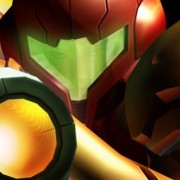I recently read this article by Charles Salmon (@BeardsandPixels) which made me think.
Are modern games easier or simply designed better?
Returning to Super Metroid recently, Charles found the experience too obtuse. He wonders, were games really this difficult before, or have we just grown soft? Looking at the variety of games available today, he’s come to a conclusion that may just surprise you.

This article poses a very good question unfortunately the author dwells too long on Metroid to look for answers. Metroid is a bad example of difficulty. Not to say Metroid isn’t hard, but if Metroid was just a Mario-Style plat former; it would actually be pretty easy to beat. The “difficulty” in Metroid cames from overwhelming the player with a massive world with no mapping system with tons of unmarked secrets the player was required to find before proceeding.
There is no doubt that this is terrible design. A modern game wouldn’t do this to you because players have come to expect maps, clues, and usually outright instructions for solving puzzles or navigating the game world. That isn’t difficulty, only fake longevity.
What is difficulty?
There is something to be said for puzzles, and I guess you could say Metriod has hard puzzles. If you consider shooting every possible block in the game trying to find the one that is fake a puzzle. I don’t consider that difficulty, at least not in the way it is usually measured when comparing old and new games. Better game design has removed much of the fake difficulty. Situations in which the player is expected to do something totally random and unprecedented to continue the game have (should have?) been fixed. The games usually have built-in mechanisms like foreshadowing, clues, or NPCs to explain what to do.
What about gameplay difficulty?
The best way I can explain it is how people currently think of “beating” a game. The conversation today goes like this:
“Did you beat X yet?”
Instead of:
“Have you ever beaten X?”
Games you are assumed to have beaten



Games you will probably never beat



Beating games has changed from a matter of skill into a matter of time. Ninja Gaiden (NES) and Ghouls and Ghosts (NES) have a high level of difficulty because no amount of instructions or walkthroughs can help you beat them. You just need to become amazingly good at avoiding projectiles and enemies. Many people won’t have the “moxie” to complete these games and it isn’t because they don’t’ know what to do (watch me try). You aren’t “stuck” not knowing what to do. The path is clear, you just need to do it. It usually took about 300 tries. So why has the dynamic changed?
Save Game
I attribute the change to game saves. You rarely see a true “Game Over” screen anymore. Generally when you die or lose you just start over at the same section of the game. This is what gives games inevitability, if you play the same section over and over you will eventually beat it. This is essentially how old games worked, except in those games if you died enough times you started the whole game over again.
It was not fun to start the whole game over; I am thankful for saves. I don’t have the time to play Halo over from the start every time I turn on my Xbox. I like to know I have made progress every time I beat a level and that progress is mine to keep. Obviously games are much longer now so this is necessary. Most NES games can be beaten in less than 30 minutes if you just go all the way through. You would be lucky to complete most modern games, even the short ones, in less than 8 hours in one shot.
A friend of mine always jokes that people complain so often about how easy Mass Effect is, even on Insanity difficulty. He tells those people to start a new game every time they die. Then come back and complain how easy the game is.






